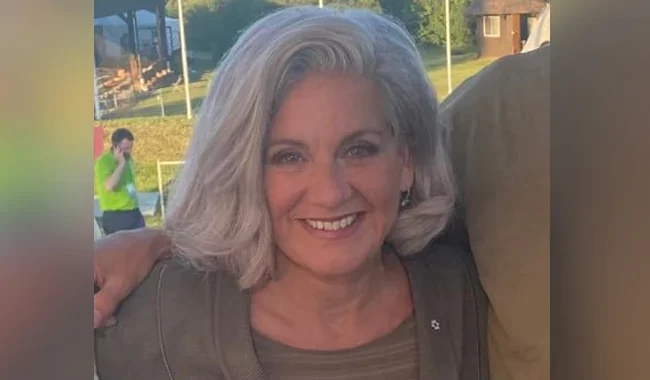Hillary Clinton once said: “Pay attention to your hair, because everyone will do it.”
It’s been two weeks since the shocking news that the old CTV News anchor Lisa Laflamme was dismissed after 35 years with the network. It is still unclear why he was released.
But after the departure of laflamme, there was an accusation of laflamme’s decision to let his hair be gray questioned by the executives.
The termination of the laflamme, and the accusation that the executives of the news room made comments about their hair, had made many people angry. More than 70 journalists, activists, politicians, and leading Canadian artists have signed an open letter that condemned the dismissal of laflamme.
Bell Media, which has CTV, has denied that the transfer of laflamme has something to do with its age or gray. The company says that ending the laflamme contract is a “business decision”.
In a post on LinkedIn, Bell Mirko Bibic said: “The narration is Lisa’s age, gender or gray hair played in the decision. I am satisfied that this is not the problem. “
In the midst of a reaction to the dismissal of laflamme, Michael Melling, Vice President News in Bell Media, is in leave not having the result of a review of the workplace.
Whatever the cause of the dismissal of laflamme, this episode once again highlights the age of the gender that many women continue to face.
Aging and gender
Unfortunately, this story is not new in the Ageism world. Ageism is a negative stereotype, prejudice or discrimination directed at parents. Problems surrounding Ageism continue to expand in our society and mainstream media.
Although age affects all older adults, women experience the biggest discrimination. Standards for attractiveness in our consumerist culture are determined by young and constant characteristics of the media.
How women are judged compared to men in terms of physical appearance vary greatly.
Take the famous father’s term (and relatively new). “Dad Bod” is a man’s body type that is described as “soft round.” This shows that, because a man has found a partner and father’s children, he does not need to worry about maintaining the physical carved. Dad Bods has been celebrated because men like Leonardo DiCaprio have made him popular.
Where is the equivalent to a woman? Is there a mother? Of course there is, but a mother is usually a woman who has “left herself away” because she is old and no longer desirable.
This gender ager is very clear in terms of physical appearance. Unrealistic pressure and expectations given to women in terms of beauty and the right are part of the increase in the importance of aesthetic values in society.
These values affect the idea that gray hair in a woman produces one of the most unwanted personalities in Western society -an old woman.
“Ideal” pictures and representation of women’s media exaggerate our hopes for the physical attraction of women: forever young, thin, bright and tight skin. This is a physical appearance that does not represent the majority of women, especially not older women.
Double standards in terms of aging talking about the fact that old women are considered the loudest in society. The loss of the cure (which is associated with attractiveness) makes women less desirable.
This dangerous standard of beauty and aging has triggered an appeal for an intersectional approach to overcome the expectations of age and physical appearance. Leading feminist scholars such as Susan Bordo have stated that when women are socialized to be more worried about their physical appearance and aging, their images and confidence are damaged.
Grey is for men but not women
Laflamme and alleged experiences about gender Agender make some interesting comparisons. There are all articles, forums, hashtags and social media sites that celebrate “silver foxes” (older men with gray or white hair). What is equivalent to silver foxes for women? There isn’t any.
Anderson Cooper continues to host his event in CNN with gray hair. George Clooney and Steve Carell are praised and labeled as their gray hair. Especially, the predecessor of Laflamme, Lloyd Robertson, was allowed to stay in the anchor chair for a long time after his hair turned gray, all of them could go with his own requirements when he was 77 years old.
This is because old men are considered to be friendly, honorable and sophisticated. Women only look old. “Whatever a woman does or not with her hair will affect how other people respond and thus her social strength”, which means that women have a choice: let the natural process of aging take over and be gray (and socially dismissed), or Coloring their hair to look younger and more “socially accepted.”
#KeepTheGrey
The experience of laflamme is a spark that has ignited the fire.
Brands that join in solidarity with laflamme including Wendy (their iconic red head logo turn to gray hair), Sports Illustrated and Dove Canada (Tweeting #keepthegrey).
These companies have taken steps in the right direction. Although this problem seems to be a gray area, far deeper than the color of laflamme hair. This is a very complex problem of gender age.
With more women (and old women) in the workforce, companies need to learn how to maintain, respect, and develop older employees. Responding to the persecution of laflamme and making it an inspiring role model is the beginning of positive change.
This article is published from a conversation under the Creative Commons license. Read the original article.
